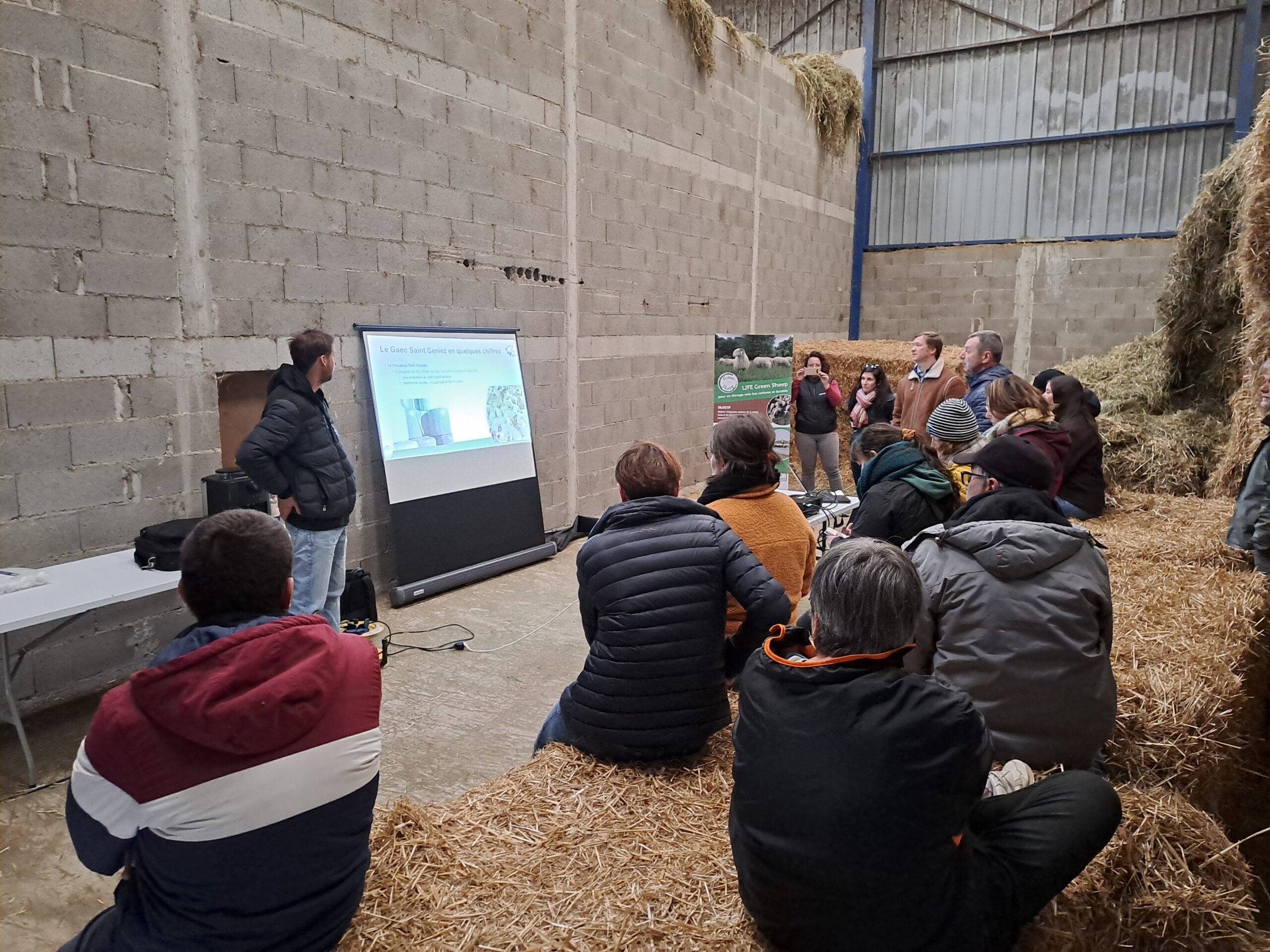Ahead of the Provinlait Show which took place in Requista on April 24 and 25, the Life GreenSheep project offered a visit to an innovative breeding facility, located nearby, on Tuesday April 23, in partnership with the UNOTEC cooperative which monitors and advises this farm. 19 people gathered at Damien Saint-Geniez in Rullac St Cirq to discover what levers are in place to reduce greenhouse gas emissions while improving the sustainability of the farm.
The GAEC Saint-Geniez is located in the Ségala area in Aveyron. Its dairy sheep workshop has 320 Lacaune dairy sheep selected. They produce around 100,000 liters of milk sold to the Société des Caves for processing into AOP (Protected designation of origin) Roquefort. Damien, the breeder, participates in the Life Green Sheep project as an innovative farm A CAP2ER level 2 environmental diagnosis was carried out at the farm level by a UNOTEC technician. The environmental performance of the sheep milk workshop was assessed, and levers were put in place to try to reduce its environmental impact.
The environmental performance of the sheep milk workshop was assessed, and levers were put in place to try to reduce its environmental impact. In fact, each ewe/lamb pair receives approximately 269 kg of concentrate per year. Thus, emissions linked to food are 1.5 times higher compared to an average Ségala system. The levers put in place by the breeder and his advisor were therefore to replace the soybean meals with a complete feed with 33% MAT, to monitor the volume of grass in the meadows and to reduce the quantity of concentrate distributed to the pasture.
A motivation for the breeder to implement the low carbon practices:
The breeder’s main motivation for implementing these levers is primarily economic. “When we see that the price of food can go from simple to doubling, we were pushed to think,” declares the breeder. The challenge was therefore to obtain a ration of the same quality, which did not cost more. The breeder also thinks that “the environment is an important topic nowadays”, he even wonders if his “subsidies will not depend on greenhouse gases one day”. Finally, the levers mentioned would also make it possible to “secure production” and not be “dependent on imported food”.
Improved economic, environmental and technical results:
A new CAP’2ER diagnosis was carried out in 2023 following the implementation of the identified practices. The economic gains are linked to environmental optimization amount to 20 euros/EMP (Average Current Workforce) on average. Gross GHG emissions were reduced by 14%. Fossil fuel consumption has decreased by 30%, notably thanks to the cessation of soybean meal. The farm has gained in forage autonomy and concentrates (+ 5% and 16% respectively). Concentrate consumption has decreased by 50kg/Ewe without altering milk production.
And why not me ?
According to the UNOTEC advisor, each farm is different and the action levers put in place are diverse. The main motivation of breeders for participating in such a project seems to be the economic aspect since often, economic gains come with the implementation of the action levers. A partial budget is carried out before any change in practice to estimate possible economic losses, if necessary the practice is not adopted. Many breeders also attach importance to the environmental aspect and want to improve. The practices put in place aim to mitigate the environmental impact, but sometimes prove to be means of adaptation to climate change, through work on food autonomy for example.

